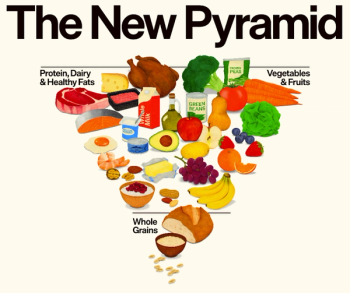
CMS kicks off price negotiations with Big Pharma for 10 drugs for Medicare
Administration, HHS tout milestone day on road to lowering drug prices for beneficiaries.
The United States is making an offer to Big Pharma on the 10 most commonly used drugs for Medicare.
Whether it’s an offer they can’t refuse remains to be seen.
On Feb. 1, the U.S. Centers for Medicare & Medicaid Services (CMS) will send initial offers to drug manufacturers on the first 10 drugs selected for negotiations to bring down prescription prices. “This is the first time ever that Medicare is not accepting the drug prices the pharmaceutical companies set,” said a
In statements,
That same year, 9 million seniors on Medicare $3.4 billion out-of-pocket for the 10 drugs used for conditions including blood clots, arthritis, diabetes, cancer and heart disease. Meanwhile, “Big Pharma continued to make record profits, ripping off American taxpayers and the seniors their drugs aim to treat,” the White House statement said.
You think prices are high here? You’re right
The White House touted at least two supports for the drug price dickering: overwhelming public support and studies showing medicines in the United States are more expensive than in other developed nations.
Some argue the Medicare negotiation is the wrong tactic because pharmaceutical companies research and develop new drugs, so bargaining over prices could stifle progress in medicine.
Across all voters who saw messaging from both sides, 83% strongly or somewhat supported drug price negotiations, with 90% support from Democrats, 81% support from independents, and 77% support from Republicans, in a September 2023 poll by
Prices overseas
Meanwhile, the White House also cited a report by the HHS Office of the Assistant Secretary for Planning and Evaluation (ASPE). That office contracted with RAND Health Care to compare drug prices in the United States with those in other countries in the Organisation for Economic Co-operation and Development (OECD).
In 2022, U.S. prices across all drugs – brands and generics – were nearly three times as high as prices in 33 OECD comparison countries, the report said.
What does that mean for patient wallets and purses? “For every dollar paid in other countries for drugs, consumers in the U.S. pay $2.78. The gap is widening over time as U.S. drug prices grow faster than drug prices in other countries and the mix of drugs changes,” the report said.
The researchers noted U.S. prices for unbranded generic drugs were lower than other countries – 67 cents paid by U.S. consumers for every $1 spent by consumers in other countries. Unbranded generics make up 90% of U.S. prescriptions, vs. 41% in other nations, the report said.
Tallying U.S. drug spending is a complex process, depending on utilization rates, the mix of drugs dispenses, and drug prices, the report said. If utilization and drug mix are constant, “higher prices translate directly to higher spending on drugs,” which in turn pushes up health insurance premiums and out-of-pocket spending by patients, the report said.
That report is not an isolated instance; the researchers cite at least three other studies. Earlier this year, The Commonwealth Fund also analyzed U.S. and other countries’ prices for the first 10 drugs in the Medicare negotiations and found
New online resources
HHS also announced the Feb. 1 launch of
What are the drugs?
The drugs (and treated conditions) that CMS announced would be the first 10 for negotiation are:
- Eliquis (preventing and treating blood clots),
- Jardiance (diabetes, heart failure),
- Xarelto (preventing and treating blood clots, reducing risk for patients with coronary or peripheral artery disease),
- Januvia (diabetes),
- Farxiga (diabetes, heart failure, chronic kidney disease),
- Entresto (heart failure),
- Enbrel (rheumatoid arthritis, psoriasis, psoriatic arthritis),
- Imbruvica (blood cancers), and
- Stelara (psoriasis, psoriatic arthritis, Crohn disease, ulcerative colitis)
Newsletter
Stay informed and empowered with Medical Economics enewsletter, delivering expert insights, financial strategies, practice management tips and technology trends — tailored for today’s physicians.








